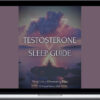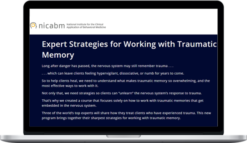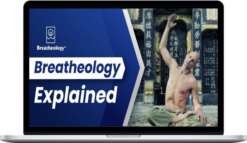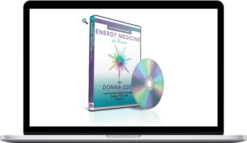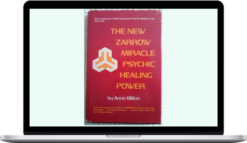Gregory Lehman – Reconciling Biomechanics with Pain Science
$350.00 $74.00
»Within 24hs
Description
Gregory Lehman – Reconciling Biomechanics with Pain Science
Description Of Reconciling Biomechanics with Pain Science
A comprehensive approach to using a traditional biomechanically based practice within a biopsychosocial approach.
This course has been taught more than 80 times on 5 continents. It is constantly being updated and we consider it a great course for new grads and seasoned veterans. New grads report that it helps give some direction to their new learning and old pros often find it reinforces much of what they know but gives some additional practical insights into improving what they do. We recognize that some of the material is contestable but many of those who have taken the course with different biases still find there are practical and useful parts. We are allowed to disagree and when we do it often makes everyone in the course that much smarter.
Brief Overview
This is practical course designed to help therapists simplify the mechanical aspects of their treatment and build new communication and clinical reasoning skills. It teaches an alternative to the kinesiopathological model of pain and injury but still tries to answer when biomechanics matters.
Therapeutic neuroscience is taught but not with a heavy neuroscience slant. Rather, practical approaches to teaching patients about pain that builds resiliency, optimism and encourages self-control of symptoms are the focus. We focus on cognitive restructuring to address many of the common unhelpful beliefs regarding pain and injury and use our Pain Key Messages to change behaviour. Much of the information is based on the Recovery Strategies Pain Workbook. Exercise prescription and symptom modification is taught with an emphasis on clinical reasoning and less about specific exercise (as those aren’t always necessary).
Course Background
The biopsychosocial model of pain and injury has been argued as superior to the traditional biomedical approach for more than two decades. However, traditional therapy typically relies on explanations and a clinical reasoning model that is predominantly biomechanics based. Significant research in the pain neurosciences and biomechanics field often appears to undermine the reasoning and justifications for many of the therapeutic approaches and techniques of the physical therapy profession.
By addressing the both the weaknesses and strengths of the biomechanical approach we can see that treatment can be much simpler, congruent with the cognitive, neuroscience approach and best evidenced based practice.
Special topics include therapeutic neuroscience education, assessment and exercise prescription, symptom modification techniques, tendinopathy as a model for persistent pain research and a reconceptualization of manual and exercise therapy that is symptom modification based rather than biomechanically driven.
Course Themes – Simplifying the Physical/Bio Approach

What you’ll learn in Reconciling Biomechanics with Pain Science
What can the student expect to come away with from this Reconciling Biomechanics with Pain Science course?
- Simplified assessment techniques for partitioning the role of biomechanics and therapeutic neuroscience in the treatment of pain and injury
- Interviewing and help with explaining the multifactorial nature of pain for specific cases
- Exercise prescription informed by biomechanics and therapeutic neuroscience
- Simplified manual therapy techniques that are consistent with therapeutic neuroscience and the biomechanics of manual therapy
- Immediate means of applying therapeutic neuroscience to a traditional biomedically based practice
- Confidence in the leaving behind the traditional and outdated biomechanical model of care while learning how to integrate previously learned skills
- Access to patient centred handouts/workbooks (electronic) that reinforce the teachings and approach of the therapist to their patient
Course Content
The course attempts to address a series of a clinical questions that both patients and practitioners pose. By addressing clinical questions in an interactive lecture format the student will learn practical means of addressing these questions with their patients as well as the thought process and literature used to arrive at a defensible answer. This is primarily done through rapid case scenarios and examples. Hands on and practical components are mixed with interactive discussion based lectures.
Clinical Questions and Topics
Course Overview: An alternative to the kinesiopathological model of pain and movement dysfunction
- A critique outlining the limitations of the traditional biomechanical model of therapy.
Topics included:
- Discussions on the kinesiopathological model of dysfunction. Reconciling current beliefs with the evidence
- Why comprehensive capacity, load tolerance and movement preparation trump movement ideals/quality
- How graded exposure and exploiting human adaptability is a better model for rehabilitation
- The importance of clinical explanations in pain resolution: how the traditional biomechanical model can be adapted to help our patients
Salvaging best practice
- The antidote is the anecdote: how to teach pain neuroscience to patients
- How to explain common clinical diagnoses and aches and pains to your patients consistent with best practice and therapeutic neuroscience.
- Explain the mechanisms of pain helps support and rationalize that therapeutic solution that we offer.
- Symptom Modification Techniques: how symptom and sensitivity modification is informed by current techniques. We distill the common elements from different techniques to present a simplified and effective treatment approach
- Just load it! The importance graded exposure in all pain and injury conditions
- When Biomechanics Matters: biomechanics is still important but should fit within the biopsychosocial framework.
- Comprehensive Capacity: why traditional “corrective exercise” and kinematic ideals fall short in pain resolution and injury management. An simpler alternative is supplied based on the person’s ability to adapt.
- The Tendon Loading Model of Rehabilitation and its application to common clinical disorders an evidence based approach to understanding pain and rehabilitating common conditions
- Graded Exposure and resuming life roles: how movement dosage, movement behaviour modifications, explaining pain, resuming life roles is the key to building robust, confident patients
- Reconceptualizing Manual Therapy: Using touch, guided movements, novelty, contractions and 3D movement exploration to fine tune existing manual therapy techniques. This section will also simplify manual therapy based on the current research.
Case Study Applications
A series of case studies will be used throughout the course to illustrate all concepts
Course curriculum
1. Introduction – PLEASE READ ME
- WELCOME -INFORMATION ON USING THE ONLINE COST AS A CREDIT FOR THE
- IN-PERSON COURSE
- Course Objectives
2. Module 1: Finding Fundamentals – Course Introduction
- Course Introduction – Fundamentals Part One
- Course Introduction – Fundamentals Part 2 – new version
- Course Introduction – Fundamentals Part Three
- Course Introduction – Principles and Questions
- Introduction Quiz
3. Module #2 – Therapeutic Principles Part 1
- Therapeutic Principles – Clinical Decision Making Part 1
- Therapeutic Principles – Clinical Decision Making Part Two
- Therapeutic Principles Quiz
- Therapeutic Principles – Clinical Decision Making and Case Studies
4. Module #3: Reframing the Kinesiopathological Model
- Reframing the Kinesiopathological Model – An overview
- Reframing the KPM – Reconciling Posture, Performance and Sensitivity
- KPM Reframed Quiz
- 3 Reframing the KPM – overview (lecture 1) and posture (lecture 2) only
- 3 BONUS Material. – Reframing the Kinesiopathological Model – Overview and Posture & Performance with Bonus Material
5. Module #4: Targets of Exercise and Movement Prescription
- Targets of Exercise Prescription Overview
- Targets of Exercise Prescription – Knee Osteoarthritis Case Studies
- Targets of Exercise Prescription Quiz
- Targets of Exercise Prescription – Overview and Clinical Cases
6. Module #5: Exercise Prescription Variables
- A note on this module, bonus material and future courses
- Exercise Prescription Variables and Dosage – Tendon Focused
- Exercise Prescription Variables – Developing strength, power, mobility and then some
- Exercise Prescription Dosages Quiz
- 5 exercise dosage and exercise targets
- Resource – Relevant Readings
7. Module #6: Comprehensive Capacity and the Targets of Exercise Prescription
- Exercise Prescription – Part 1 – Introduction to Comprehensive Capacity with Tendinopathy Cases
- 6 exercise prescription part 1 comp capacity tendinopathy intro
- Exercise Prescription – Part 2 – Lateral hip pain and hamstring disorders
- Exercise Prescription -Part 3 – Preparation Trumps Quality
- Exercise Prescription Quiz
- 6 exercise prescription part 3 preparation trumps quality
- Exercise Prescription – Part 4 – Comprehensive Capacity and Shoulder Rehabilitation
- 6 exercise prescription Part 4 comprehensive capacity shoulder case
- exercise prescription – Part 2 – lateral hip pain vs. hamstring injuries
8. Module #7 – Symptom Modification
- Symptom Modification – Overview and Clinical Decision Making
- 7a symptom modification graded exposure
- 7b Symptom Modification – Graded Activity to Specific Tasks
- 7c Symptom modification to reframe the KPM – Reconciling the Scapular Dyskinesis
- Symptom Modification Quiz
- 7 symptom modification overview and clinical decision making
- 7a symptom modification graded exposure details
- 7c symptom modification and reframing the KPM with shoulder dyskinesis
- 7b Graded Activity into Specific and Painful Activity
9. Module #8: – Special Topics in Reconciling Biomechanics
- Core Stability Reframed – Deep Dive
- Why you don’t need to worry about knee valgus when it comes to knee cap pain – A polemic
- Core Stability Reframed – Notes
- Knee Valgus Reframed – A Polemic
10. Module #9: When Biomechanics Matters – more KPM Reframing
- The role of lumbar spine flexion and low back pain – is it an independent risk factor?
- When biomechanics matters – using ACL injuries as a model
- 9c spine flexion brief primer
- 9 when mechanics matters high loads ACL
- 9a spine flexion MASSIVE DETAIL – BONUS LECTURE
- When Biomechanics Matters Quiz
11. Module #10 – Key Messages of Recovery and Pain Science
- Key Messages of Pain and Recovery – Part 1
- Key Messages of Pain and Recovery Part 2
- Key Messages of Recovery Part 1 2020
- Key messages of recovery 2020
- Key Messages of Pain and Recovery Quiz
About Gregory Lehman

Gregory Lehman is a physiotherapist, chiropractor and strength and conditioning specialist. He treats a range of patients from the elite athlete hoping to make it to the Olympics to the 63 year old with knee OA hoping to continue running and being active. Greg has a very diverse clinical and research background. Publishing more than 20 peer reviewed journal articles, speaking at international conferences and delivering the Globally popular Reconciling Biomechanics with Pain Science to over 2500 therapists in the past 5 years.
More courses from the same author: Gregory Lehman
Delivery Policy
When will I receive my course?
You will receive a link to download your course immediately or within 1 to 21 days. It depends on the product you buy, so please read the short description of the product carefully before making a purchase.
How is my course delivered?
We share courses through Google Drive, so once your order is complete, you'll receive an invitation to view the course in your email.
To avoid any delay in delivery, please provide a Google mail and enter your email address correctly in the Checkout Page.
In case you submit a wrong email address, please contact us to resend the course to the correct email.
How do I check status of my order?
Please log in to HealingCourse account then go to Order Page. You will find all your orders includes number, date, status and total price.
If the status is Processing: Your course is being uploaded. Please be patient and wait for us to complete your order. If your order has multiple courses and one of them has not been updated with the download link, the status of the order is also Processing.
If the status is Completed: Your course is ready for immediate download. Click "VIEW" to view details and download the course.
Where can I find my course?
Once your order is complete, a link to download the course will automatically be sent to your email.
You can also get the download link by logging into your HealingCourse account then going to Downloads Page.
Related products
Total sold: 3
Total sold: 2
Total sold: 3
Total sold: 3
 APRIL FOOLS' DAY SALE
APRIL FOOLS' DAY SALE 
